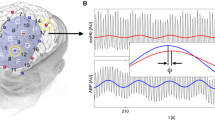Abstract
Cerebral hemodynamics play a pivotal role in stroke pathogenesis. Transcranial Doppler (TCD) studies demonstrated the importance of cerebral vasomotor reactivity (VMR) on the outcome of carotid artery occlusion (CAO). So far, positron emission tomography represents the best technique for detecting both hemodynamic and metabolic aspects of cerebral perfusion adaptive processes in cerebrovascular patients. Near-infrared spectroscopy (NIRS) is a new method allowing for a non-invasive assessment of cerebral blood flow and hemoglobin (Hb) oxygenation parameters.
A recent TCD and NIRS study demonstrated that patients with symptomatic CAO had lower VMR values measured by TCD and lower oxygen saturation (oxygen%) increases detected by NIRS than asymptomatic ones. The parameters were obtained simultaneously after CO2 inhalation. The present study aims to investigate if Hb oxygen % could represent also at rest a marker of hemodynamic status in carotid disease.
Thirty-five symptomatic and 17 asymptomatic patients with CAO underwent a simultaneous examination by means of TCD and NIRS at rest condition and during CO2 reactivity test.
Symptomatic patients presented with oxygen% values at rest higher (p = 0.001) and VMR values lower (p < 0.001) than asymptomatic subjects. According to a logistic model, for each unitary VMR increase, the odds of being symptomatic decreases of about 10% (OR = 0.9, p = 0.001); for each unitary increase of oxygen% at baseline, this odd increases of about 23% (OR = 1.23, p = 0.031).
In addition to TCD VMR values, oxygen hemoglobin saturation at rest detected by NIRS can discriminate symptomatic from asymptomatic patients with CAO. NIRS can add an important contribution to explain pathophysiological mechanisms of stroke occurrence.


Similar content being viewed by others
References
Aaslid R, Markwalder TM, Nornes H (1982) Non-invasive transcranial Doppler ultrasound recording of flow velocity in basal cerebral arteries. J Neurosurg 57:769–774
Bartels E (1999) Color-coded duplex ultrasonography of the cerebral vessels. Schattauer, Stuttgart, Germany/New York, NY
Caplan LR, Hennerici M (1998) Impaired clearance of emboli (washout) is an important link between hypoperfusion, embolism, and ischemic stroke. Arch Neurol 55:1475–1482
Chance B (1991) Optical Methods. Ann Rev Biophys Chem 20:1–28
Derdeyn CP, Grubb RL, Powers WJ (1999) Cerebral hemodynamic impairment. Methods of measurements and association with stroke risk. Neurology 53:251–259
Derdeyn CP, Videen TO, Kent DY, Fritsch SM, Carpenter DA, Grubb RL, Powers WJ (2002) Variability of cerebral blood volume and oxygen extraction: stages of cerebral haemodynamic impairment revisited. Brain 125:595–607
Elwell CE, Cope M, Edwards AD, Wyatt JS, Delpy DT, Reynolds EO (1994) Quantification of adult cerebral hemodynamics by near-infrared spectroscopy. J Appl Physiol 77:2753–2760
Fabbri F, Henry ME, Renshaw PF, Nadgir S, Ehrenberg BL, Franceschini MA, Fantini S (2003) Bilateral near-infrared monitoring of the cerebral concentration and oxygen-saturation of hemoglobin during right unilateral electro-convulsive therapy. Brain Res 992(2):193–204
Fantini S, Franceschini MA, Maier JS, Walker SA, Barbieri B, Gratton E (1995) Frequency-domain multichannel optical detector for non-invasive tissue spectroscopy and oximetry. Optical Eng 34:32–42
Grubb RL, Derdeyn CP, Fritsch SM, Carpenter DA, Yundt KD, Kent D, Videen TO, Spitznagel EL, Powers WJ (1998) Importance of hemodynamic factors in the prognosis of symptomatic carotid occlusion. JAMA 280:1055–1060
Jobsis FF (1977) Non-invasive, infrared monitoring of cerebral and myocardial oxygen sufficiency and circulatory parameter. Science 198:1264–1267
Keller E, Wietasch G, Ringleb P, Scholz M, Schwarz S, Stingele R, Schwab S, Hanley D, Hacke W (2000) Bedside monitoring of cerebral blood flow in patients with acute hemispheric stroke. Crit Care Med 28:511–516
Markus H, Cullinane M (2001) Severely impaired cerebrovascular reactivity predicts stroke and TIA risk in patients with carotid artery stenosis and occlusion. Brain 124:457–467
Saitou H, Yanagi H, Hara S, Tsuchiya S, Tomura S (2000) Cerebral blood flow and oxygenation among post-stroke hemiplegic patients: effects of 13 rehabilitation tasks measured by infrared spectroscopy. Arch Phys Med Rehabil 81:1348–56
Smielewski P, Kirkpatrick P, Minhas P, Pickard JD, Czosnyka M (1995) Can cerebrovascular reactivity be measured with Near-Infrared spectroscopy? Stroke 26:2285–2292
Terborg C, Bramer S, Harscher S, Simon M, Witte OW (2004) Bedside assessment of cerebral perfusion reductions in patients with acute ischemic stroke by near-infrared spectroscopy and indocyanine green. J Neurol Neurosurg Psychiatry 75:38–42
Vernieri F, Pasqualetti P, Passarelli F, Rossini PM, Silvestrini M (1999) Outcome of carotid artery occlusion is predicted by cerebrovascular reactivity. Stroke 30:593–598
Vernieri F, Tibuzzi F, Pasqualetti P, Rosato N, Passarelli F, Rossini PM, Silvestrini M (2004) Transcranial doppler and near-infrared spectroscopy can evaluate the hemodynamic effect of carotid artery occlusion. Stroke 35:64–70
Villringer A, Steinbrink J, Obrig H (2004) Editorial comment - Cerebral near-infrared spectroscopy: how far away from a routine diagnostic tool? Stroke 35:70–72
Author information
Authors and Affiliations
Corresponding author
Additional information
Received in revised form: 15 March 2006
Rights and permissions
About this article
Cite this article
Vernieri, F., Silvestrini, M., Tibuzzi, F. et al. Hemoglobin oxygen saturation as a marker of cerebral hemodynamics in carotid artery occlusion. J Neurol 253, 1459–1465 (2006). https://doi.org/10.1007/s00415-006-0244-6
Received:
Accepted:
Published:
Issue Date:
DOI: https://doi.org/10.1007/s00415-006-0244-6




